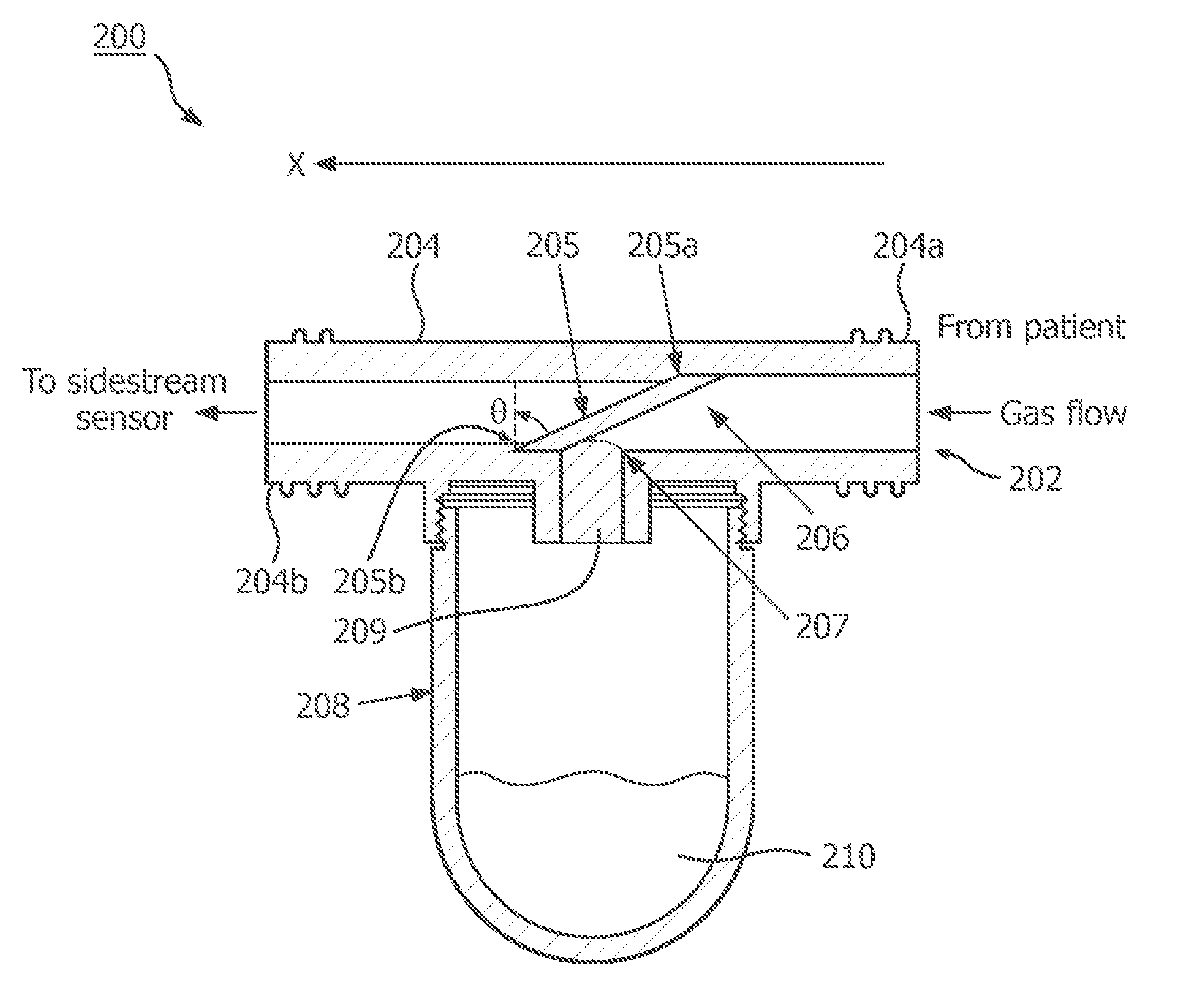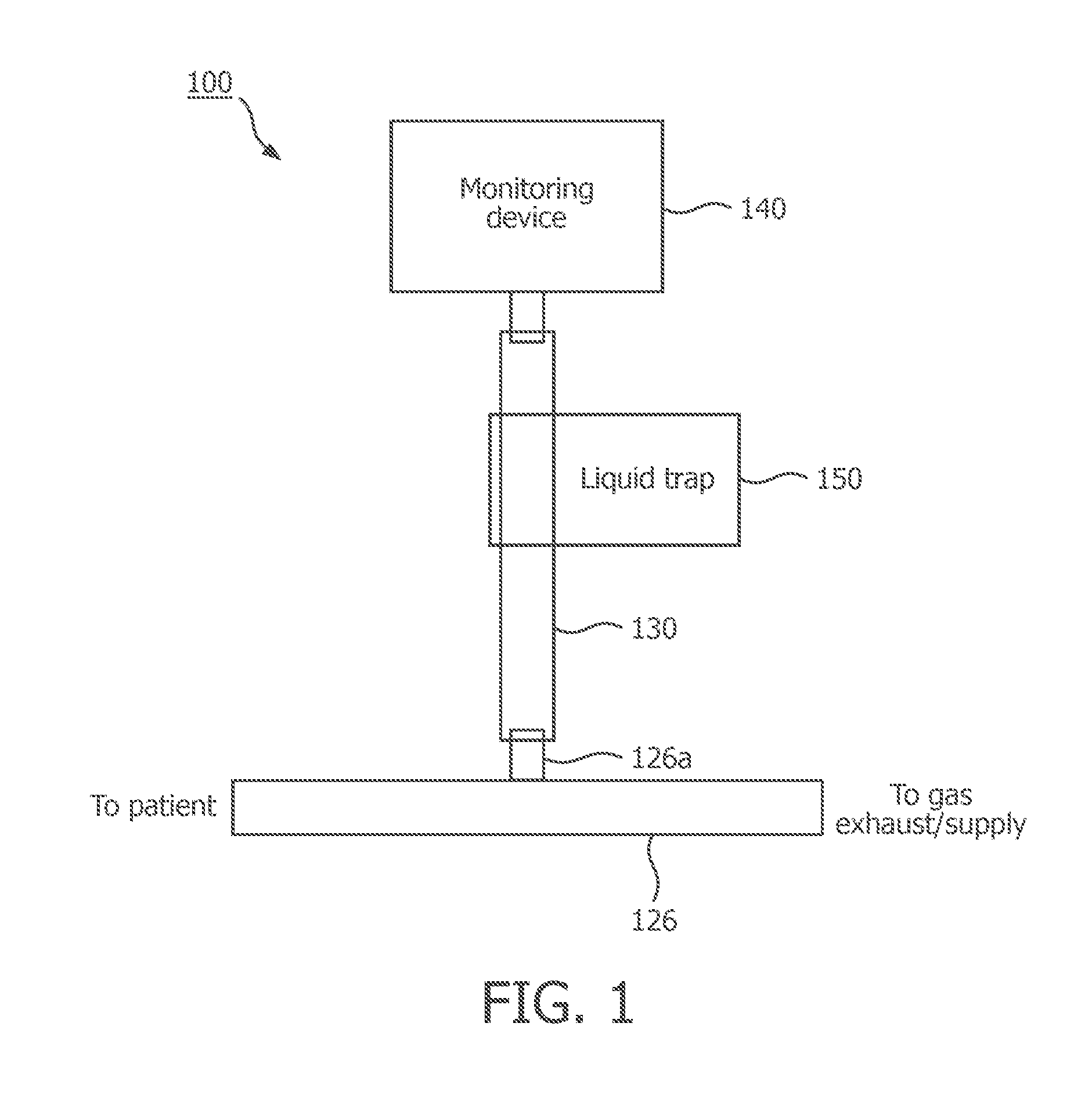Low dead space liquid trap
a liquid trap and low-dest space technology, applied in the field of low-dest space liquid traps, can solve the problems of sample line occlusion and waveform distortion, sidestream monitoring has some drawbacks, etc., and achieves the effect of fast response time and inability to easily monitor non-intubated patients
- Summary
- Abstract
- Description
- Claims
- Application Information
AI Technical Summary
Benefits of technology
Problems solved by technology
Method used
Image
Examples
Embodiment Construction
[0041]The present invention will now be described more fully hereinafter with reference to the accompanying drawings, in which preferred embodiments of the invention are shown. This invention may, however, be embodied in different forms and should not be construed as limited to the embodiments set forth herein. Rather, these embodiments are provided as teaching examples of the invention.
[0042]FIG. 1 illustrates one example embodiment of an arrangement 100 which employs sidestream monitoring of a patient's respiratory gas. Arrangement 100 include a breathing tube 126 through which passes the respiratory gas of a patient. Tube 126 has a monitor port 126a which is connected via a tube 130 and a liquid trap 150 to a monitoring device 140.
[0043]In some embodiments, monitoring device 140 may comprise a capnography monitor. In particular, monitoring device 140 may include a sensor for measuring the CO2 concentration in a gas sample, and a display for displaying the CO2 concentration versus...
PUM
 Login to View More
Login to View More Abstract
Description
Claims
Application Information
 Login to View More
Login to View More - R&D
- Intellectual Property
- Life Sciences
- Materials
- Tech Scout
- Unparalleled Data Quality
- Higher Quality Content
- 60% Fewer Hallucinations
Browse by: Latest US Patents, China's latest patents, Technical Efficacy Thesaurus, Application Domain, Technology Topic, Popular Technical Reports.
© 2025 PatSnap. All rights reserved.Legal|Privacy policy|Modern Slavery Act Transparency Statement|Sitemap|About US| Contact US: help@patsnap.com



